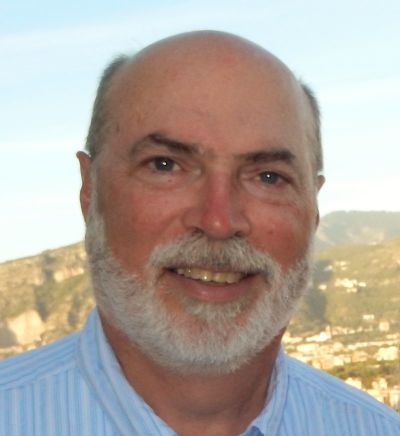Negative interest rates? How does that work?

Over $17 trillion dollars’ worth of global debt is now “earning” an interest rate below 0%. Negative interest rates are infecting developed countries such as Germany, Switzerland and Japan. I read an article recently that said there are negative interest rate mortgages available in Denmark. Just trying to think about negative interest rates makes one’s head explode.
From a practical perspective, the mechanics of negative interest rates are clear enough. The borrower guarantees to pay, say, $1000 in a year. The lender then agrees to give the borrower $1020 (for a negative 2% yield) for the guaranteed payment. Voila, negative interest! You might point out that the lender would be better off just holding onto the cash, but that’s another story. A negative interest rate mortgage is even more cool. Each payment the borrower makes on the mortgage reduces the principal balance by more than the amount of the mortgage payment. How cool is that?
What has happened to interest rates that they are so low for so long? What does it mean for the economy in the United States and elsewhere? I certainly do not know, nor does anyone else. Interest rates are a price signal in the economy; the price of postponing consumption to a later period. Persistently low interest rates are a puzzle to economists and policymakers. Standard economic theory would expect that interest rates should be high enough to convince consumers to save something and not spend it all today and low enough that businesses can borrow and invest and still make a profit. In any case, economic theory does not expect negative interest rates.
Who determines what the level of interest rates should be? In a reasonably free economy with properly functioning financial markets, we do. That is, the interest rate is determined by the interaction of borrowers and lenders trying to do business together. If there are more borrowers seeking funds than lenders (i.e., savers) willing to lend them funds, then interest rates will increase. Borrowers compete for the scarce funds by offering to pay higher interest on the loans. This attracts more lenders and discourages some potential borrowers until the interest rate finally “clears the market” (i.e., demand for funds from borrowers is equal to the supply of funds from lenders). The reverse situation occurs when there are more lenders than there are borrowers. In that case, lenders compete to attract the scarce borrowers by lowering the rate they require to make the loan. Falling rates attract more borrowers and deter potential lenders, until the interest rate “clears the market” (demand equals supply). Simple, right?
Well, not so much. You see, since the end of the gold-is-money era in 1971, central banks have played an increasingly active role in the manipulation of money and interest rates. The central bank for the United States is the Federal Reserve Bank. There are similar central banks in other countries. Here is how it works in central-bank-controlled financial markets:
If the Fed (i.e., the central bank) wants to increase economic activity, it injects money into the economy. (How the central bank injects money is not our focus today, but it does matter.) “Easy money” lowers interest rates and attracts more borrowers and demand for loans thereby creating more economic activity. If the central bank wants to dampen economic activity, it drains money out of the economy (again, “how” is not our focus today). “Tight money” raises interest rates and reduces demand for loans thereby reducing economic activity.
Since the era of central bank control over money began for earnest in 1971, the level of interest rates has become increasingly separated from the wisdom of economic markets and increasingly controlled by the wisdom of a handful of technicians, “experts” in the ways of central banking. Fortunately, these technicians are immune from political pressures so they are free to act according to their economic models, not according to political wishes. (In case you missed it, the last sentence is firmly tongue in cheek.)
At least in the short run, low interest rates are a boon to debt-burdened governments and other debtors in that low rates keep the cost of debt down. (That is one reason President Trump has made no secret of the fact that he is “a low interest rate guy”.) If interest rates ever return to a “normal” level, watch out! Government budgets will be whacked hard to pay for the higher cost of interest on the government debt.
The interventions of central banks (especially the Fed, The European Central Bank and the Bank of Japan) have become very active since the financial crash of 2008 and there is no end in sight. The Fed, under Chairman Powell, made a good faith effort over the last two years to get out of the business of suppressing interest rates. But the global efforts of the European Central Bank and the Bank of Japan were in the opposite direction, further suppressing interest rates, and putting the Fed in an untenable situation. Last month the Fed responded by cutting interest rates and signaling that more cuts might be coming. Despite eleven years of economic growth, we are back to a world of low interest rates in the United States and negative interest rates in much of the developed world.
Where do we go from here? No one really knows. The hyperactivity of central banks has had some long-term damaging influences. Government debt has ballooned out of control, without the discipline of realistic interest rates to temper political ambitions. Corporate debt has also climbed to new heights, as low interest rates encourage companies to borrow cheap funds and buyback their own stocks. The world has learned how to manipulate fiat money for short term advantages. With the “quantitative-easing cat” out of the bag, populist politicians like Bernie Sanders can credibly call for government to just print money to finance pie-in-the-sky Socialist dreams. If America chooses the Socialist path, despite a century of misery for people under socialism, central bank induced low interest rates will be partly to blame.
It will be a long and difficult road back to the inevitable reality that the world is not flat, and that true purchasing power represented by money is earned and not just printed or created out of thin air. In the meantime, it might not be a bad idea to buy a little gold.




























